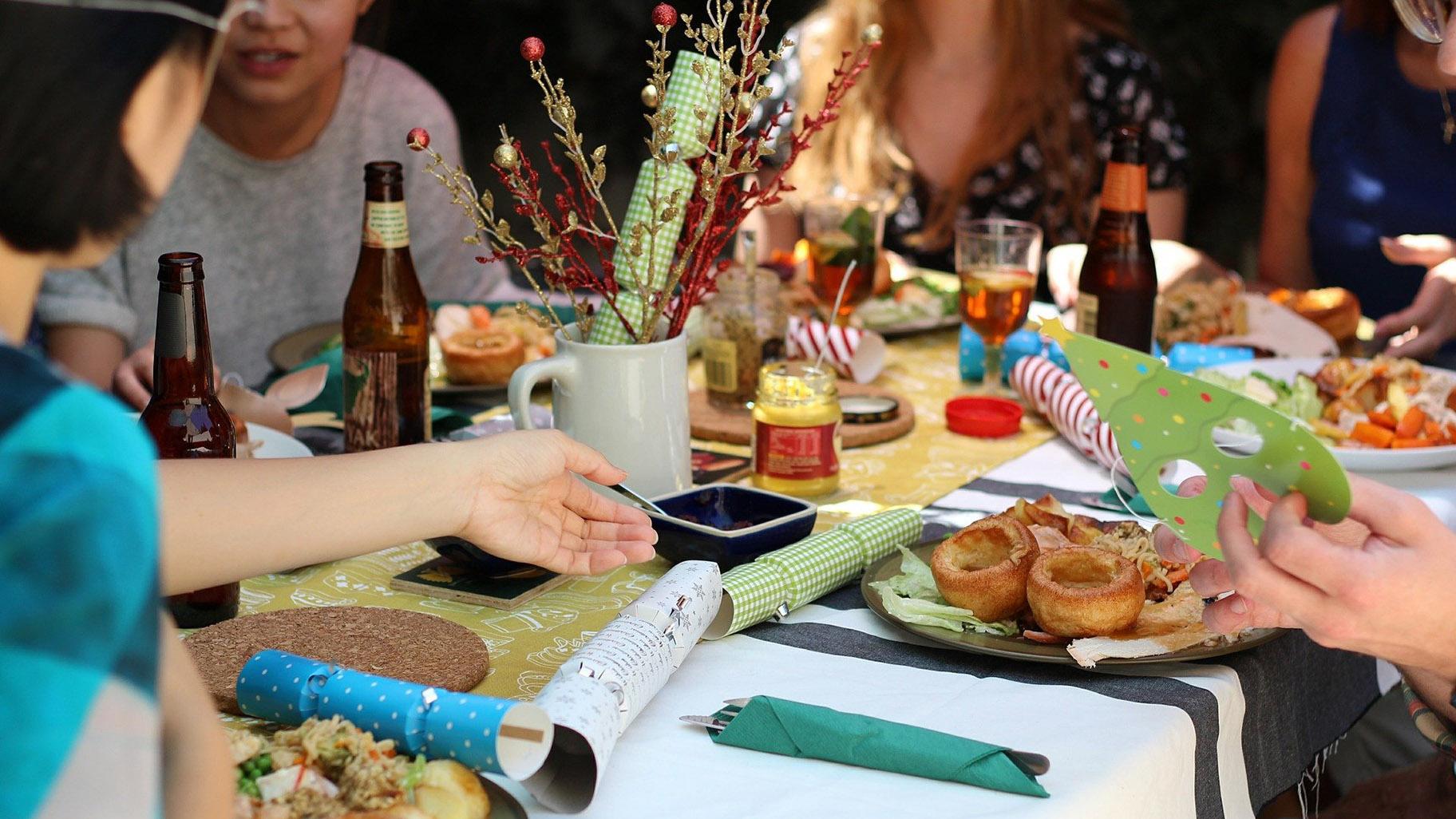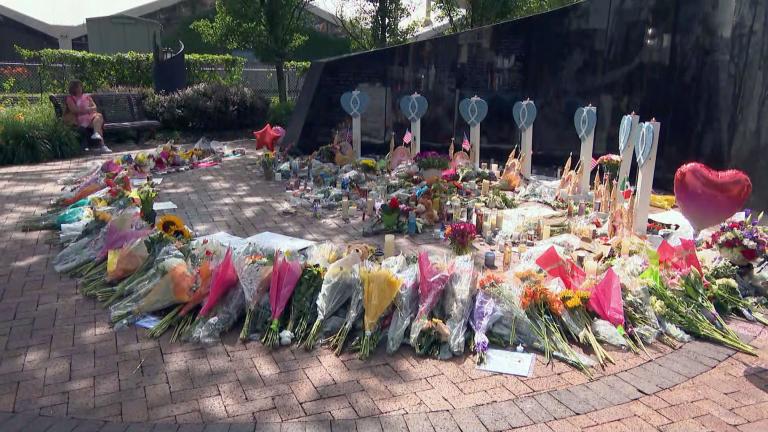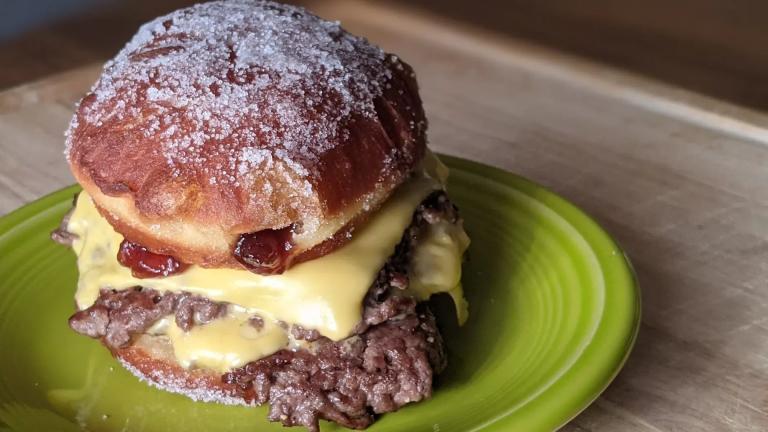This is typically the time of year when Americans look forward to gathering with family and friends. But in 2020, the holidays will be like no other.
In fact, with coronavirus cases surging across the country, many medical experts — including Dr. Allison Arwady, commissioner of the Chicago Department of Public Health — are advising people to cancel all holiday travel plans and downsize their gatherings — if they are planning them at all.
We asked Dr. Emily Landon, an infectious disease specialist and executive medical director for infection prevention and control at UChicago Medicine, how to safely navigate the holidays.
What’s your advice to people ahead of Thanksgiving in terms of how they should be thinking about spending the holidays in light of COVID-19?
Dr. Emily Landon: I would say number one is to try and limit your Thanksgiving as much as possible. That means really cutting back on your number of contacts. I know a lot of people have been thinking about their lives as being part of like a quarantine bubble. And over the summer I think a lot of us opened up our bubble a bit to more and more people. But it’s time to lock that bubble down. And that means you may need to keep out some high-risk family members. And unfortunately, that is often the people we most want to see at Thanksgiving.
I know some families are going to feel like for whatever reason this Thanksgiving really matters: if someone is infirm, or there’s a chance they might not make it to next Thanksgiving … There is a way to do it, but it involves cutting back your contacts considerably. And that means people should be already quarantining basically starting today, if not before today. Everybody who is going to be together really needs to have no unmasked contacts outside of their family leading up to the day. And if you can get a test in before (the holiday) that would be good.
It’s possible that many students will be returning home from college for the holidays. Are you concerned about what that could do in terms of the spread of the virus? Some colleges are requiring students take a COVID-19 test before leaving campus to travel home. How much will that help?
Landon: It’s really important to remember that the test reflects what happened five to 10 days ago. It doesn’t reflect what happened in the days right up to you taking that test. You could have been exposed yesterday and your test would still be negative tomorrow. It wouldn’t be positive for days. So, it’s really, really important to note that while that test can make you feel a little better, if you have high-risk people at home, or if you are really concerned about your college student coming home and you don’t want to spread COVID throughout your family … then you need to have that student take a pause with the family. And the best way to do that, in my opinion, is for them to have their own room and their own bathroom. Don’t share food, don’t share towels, don’t share drinks. But also, I would think it would help if that individual wore a mask when they are in the same room as other family members for probably about a week after coming home.
I get that a lot of people don’t like that. If you don’t want to do that inside your family that’s fine. Just know that if your college student is coming home on Monday and you’re going to visit grandma on Thursday you cannot be sure that that college student is not going to bring COVID to grandma.
There is also growing evidence that masks actually reduce the amount of infection (you receive) when you get exposed. One of the things that’s driving hospitalizations and the severe illness that we are seeing is not just the sheer number of cases, but also the fact that people are having encounters indoors where the dose of the infection can be a lot higher and so that can lead to more severe disease.
Is it possible to have a safe Thanksgiving meal inside or do you have to stay outdoors?
Landon: If you are eating just with your own family that you live with all the time you can eat inside. It’s the same as any other dinner, there’s no difference. If you are going to join together with maybe one other household and you both have taken a lot of care ahead of time before you get together, that’s probably the ideal situation and that’s probably reasonable. If there are individuals that are coming that have been having a lot of unmasked contact then those are the ones you want to mask up.
 (Image by vivienviv0 from Pixabay)
(Image by vivienviv0 from Pixabay)
Putting masks on the high-risk individuals isn’t going to protect them, their eyes will still be open. The masks that we use outside of the hospital are most effective when you put them on the person who’s unknowingly carrying COVID. So I would put them on the people who are more likely to be carrying COVID and then also put a mask on those people who are at risk for a bad outcome. And then only remove those masks for the time period that you are eating and I would try and keep that time period as short as possible.
Open as many windows as you can if you can’t be outside. If you can be outside, be outside. I would remind you that’s it’s pretty easy to lift up the bottom of your mask to take sips of a drink — which is what I would recommend if you are going to be together with family.
Are you seeing “pandemic fatigue” in your own practice and experience?
Landon: Yes. A 100% yes! I am so sick of COVID. I am so tired of it. I have been doing nothing but COVID since Jan. 21. I want to spend Thanksgiving with my family. I want to do the stuff I usually do. I was really thinking that over the summer we’d have gotten a bigger boost (in getting the pandemic under control) and been able to do more things and then we’d see a downturn again in the fall. But we didn’t really get that here. I think the most important thing for people to do who are feeling pandemic fatigue is to acknowledge that you are feeling pandemic fatigue. And then decide how much you want that to play a role in what is happening. You don’t want your pandemic fatigue to take the place of your own decision-making about risk. If you were worried enough to wipe down all your groceries in March you should be worried enough to wear a mask now and to really cut back on your Thanksgiving. The situation hasn’t changed. The virus hasn’t changed. It’s now literally all around us.
We now have two vaccines which both appear in trials to be more than 90% effective in preventing coronavirus infection. What could that mean in terms of how soon we might get back to something like normalcy?
Landon: I think this is exactly what will help people get through this tough holiday season. There is a light at the end of the tunnel. So, instead of saying you are going to cancel Thanksgiving, I would say you are going to “postpone” Thanksgiving. Really taking extreme measures right now and over the Thanksgiving holiday may even help things look a little bit better for the December holidays, but I wouldn’t bank on that. What I would bank on is we are going to take pre-delivery of a vaccine at University of Chicago Medicine ahead of even when it’s approved so that we are ready start vaccinating health care workers as soon as it is approved. That is an example of how fast it is going to get out.
Now, of course we don’t have enough doses yet, and the 90-95% (figures) are probably the ceiling of the effectiveness … (but) this is great news and I am thrilled to see it. And the fact that two of them are performing really well makes me feel even more confident about their effectiveness. It sounds like we are going to be able to get the vaccine out to high-risk individuals in the spring. And the data I’ve seen suggests that even regular people should be able to start getting vaccinated by the late spring or early summer, which would mean that the second half of 2021 would feel a lot more like normal.
This interview has been edited for length.








